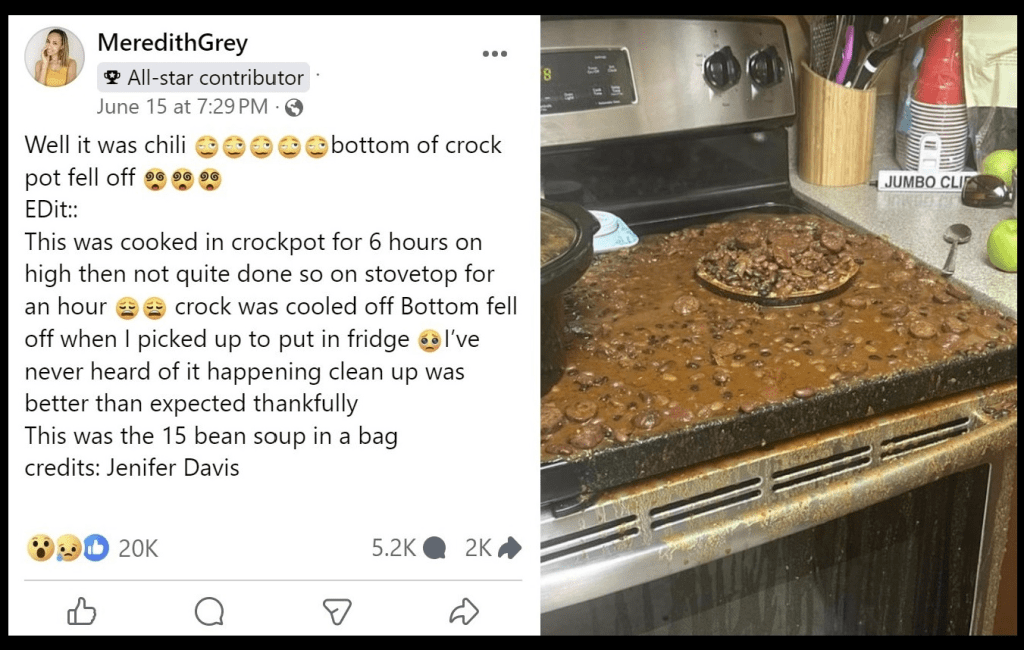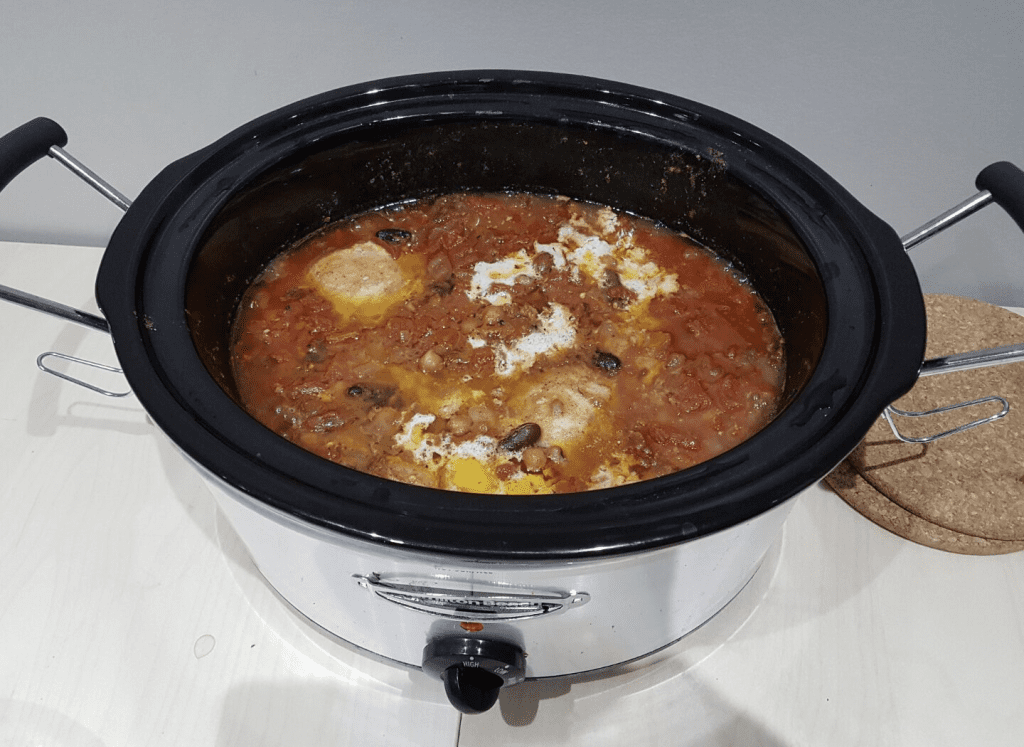The kitchen is a hub of culinary creativity, where we experiment with new recipes, test bold flavors, and enjoy the process of cooking. But it’s also a place where unexpected disasters can strike, catching even the most seasoned cooks off guard. One of the biggest pitfalls? The dangerous combination of crockpots and stovetops. You might assume these two kitchen staples can work together, but the truth is that they’re like oil and water—combining them can spell disaster.
In this article, we’ll dive deep into why placing your crockpot on the stove is a recipe for chaos, the science behind ceramic cookware, and tips to avoid a mess in the kitchen.
My Personal Kitchen Blunder: A Costly Lesson Learned

Let me start by sharing my own kitchen nightmare. I still remember the day I absentmindedly set a scorching hot lid facedown on my brand-new glass stovetop. In mere seconds, the glass cracked, leaving me staring at a costly reminder of my mistake. This mishap was more than just a financial blow; it was a wake-up call about the importance of kitchen safety.
But my story is far from unique. Not long after, I stumbled across a Facebook post that sent shivers down my spine. It showed a stove drenched in spilled chili—a catastrophe that began when someone tried to speed up slow cooking by transferring a crockpot to the stovetop. If you’ve ever wondered whether crockpots can handle direct heat, read on, because this tale has some important lessons.
The Science Behind Crockpots and Stovetops
It’s a common misconception that crockpots can withstand the high, direct heat of a stovetop. After all, crockpots are designed to generate heat, so why can’t they handle it from a different source? The answer lies in the design of the crockpot itself.
Crockpots use a ceramic insert specifically crafted for slow, steady heating. This material is excellent at maintaining a low, even temperature over several hours, making it perfect for slow-cooked stews, soups, and chili. But ceramic inserts are not built to endure the sudden, intense heat of a stove’s burner. Placing a ceramic crockpot insert directly on a hot burner can cause it to crack, chip, or even shatter due to the rapid temperature change. This kind of thermal shock is not only a recipe for a massive mess but also a significant safety risk. Imagine hot food spilling everywhere—burns and broken glass are two of the potential hazards.
Ceramic Cookware: Not All Are Stove-Safe
If you’re thinking, “But what about other ceramic cookware? Can they handle stovetop heat?”—the answer is both yes and no. Standard ceramic dishes like bowls, plates, and bakeware are not designed for direct contact with burners. They are made for serving or baking, not for intense, direct cooking. Subjecting these ceramics to a stovetop’s heat can cause similar issues as with crockpots: cracking, breaking, or creating a hazardous mess.
However, some specialty ceramic cookware, such as flameware or stovetop-safe ceramic pots, are engineered to endure higher temperatures. These items are crafted with specific glazes and materials to prevent cracking under high heat. But it’s crucial to read the manufacturer’s instructions to ensure safe use. If it’s labeled as “stovetop-safe,” then you’re in the clear—but be aware that not all ceramics are created equal.
Avoiding the Kitchen Chaos: Safety Tips for Home Cooks
Now that we’ve established that crockpots and regular ceramics don’t belong on the stove, let’s go over some practical tips to keep your kitchen safe and disaster-free:
- Use the Right Tools for the Job – If you need to transfer slow-cooked food to the stove for a final touch, opt for a metal or stovetop-safe pot. Stainless steel or cast iron is ideal for handling direct heat.
- Keep Crockpots on the Counter – The counter is the safest place for crockpots, where they can do their slow cooking without risk of thermal shock. Never try to rush the process by moving them to a burner.
- Read Appliance Manuals – Before using any kitchen gadget, be sure to read the instructions. Manufacturers provide specific guidance on what their products can and cannot handle.
- Let Ceramic Dishes Cool Down – If you’ve used a ceramic dish for baking or slow cooking, allow it to cool gradually before transferring it to the fridge, sink, or another surface. Abrupt temperature changes can cause cracking.
- Invest in Stovetop-Safe Cookware – If you love cooking with ceramic, consider investing in stovetop-safe ceramic pots. These are designed to withstand higher temperatures and provide more versatility in the kitchen.
When Things Go Wrong: How to Handle Kitchen Disasters

Even with the best precautions, kitchen accidents can happen. If you find yourself dealing with a shattered ceramic crockpot, don’t panic. Here’s what to do:
- Turn Off the Stove Immediately – Safety first. If a crockpot breaks on the stove, cut off the heat to prevent burns or a potential fire.
- Wear Gloves – Use heavy-duty gloves to carefully clean up any broken pieces and spilled food.
- Use a Wet Cloth – After removing large shards, use a damp cloth to wipe away smaller fragments and residue to avoid injury.
Lessons Learned: The Reality of Kitchen Safety
The takeaway from these kitchen misadventures is simple: not every cooking tool can do it all, and understanding your equipment’s limitations is key to a safe and successful cooking experience. Crockpots are perfect for slow-cooked dishes, but they’re not built for the intense heat of a stovetop burner. Respecting this boundary can save you from a mess, a ruined meal, and even potential injuries.
Conclusion: Keep It Safe, Keep It Simple
Cooking should be a joyful, creative process, not a source of stress or danger. Knowing the right tools for each step makes all the difference. So, the next time you’re tempted to rush a slow-cooked recipe by placing your crockpot on the stove, remember this advice: keep your crockpot grounded on the counter. It’s a small adjustment, but one that can prevent a huge disaster. And always be aware of the limitations of your cookware—because safety is the best ingredient in any recipe!


